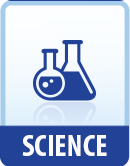|
This section contains 252 words (approx. 1 page at 300 words per page) |
The Haber-Bosch Process is a catalytic reaction in which ammonia is produced from hydrogen and nitrogen gases. The ammonia produced is used for production of artificial fertilizers. Prior to the invention of this process the United States and European countries purchased sodium and potassium nitrates from Chile and used them as natural fertilizers. During World War I, Germany was using nitrogen for explosives. The allies set up a naval blockade preventing them from receiving imports and another source of nitrogen was needed. In 1913, Fritz Haber developed the process for which he received the 1918 Noble prize in Chemistry. Although Fritz Haber invented the process, an engineer working for his company, Karl Bosch solved the difficult problems associated with the reaction conditions.
The reaction is a reversible reaction and requires a set of optimum conditions that favor the forward reaction, the formation of ammonia. It is a good example of Le Chatlier's principle. Optimum conditions include sufficient amounts of nitrogen and hydrogen, a temperature between 400°C and 500°C, a pressure of 100-350 atmospheres, a catalyst of iron mixed with oxides of other metals, and the removal of ammonia as it is formed. This process will give a 40%-60% yield of ammonia.
The United States produces about 22 billion pounds (10 billion kilograms) of ammonia per year. This process is the first industrial process based on chemistry knowledge. Artificial fertilizers have allowed the agricultural industry to provide a greater food supply to meet the needs of a growing population.
|
This section contains 252 words (approx. 1 page at 300 words per page) |


